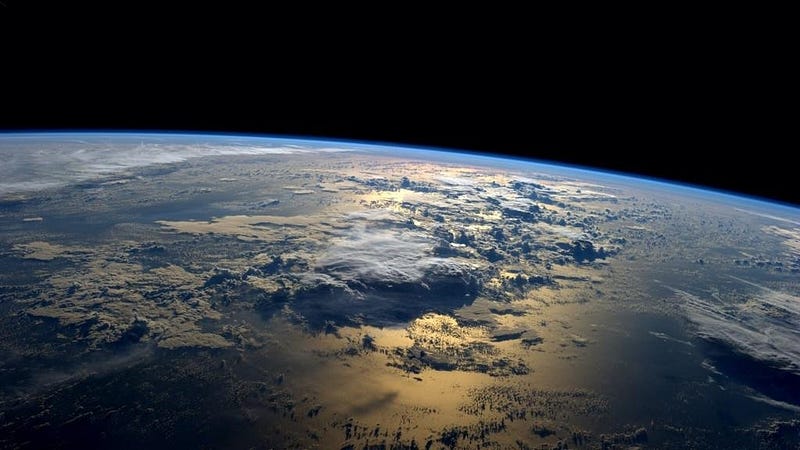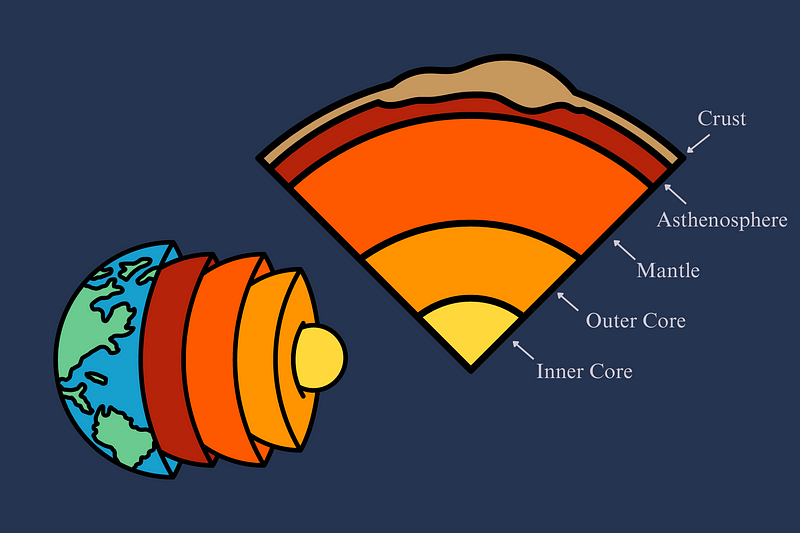Exploring the Depths: How Surface Water May Reach Earth's Core
Written on
Chapter 1: Insights into Earth's Water Dynamics
Recent studies led by a global team, including experts from Arizona State University's School of Earth and Space Science, have unveiled that surface water on Earth could travel deeper into the planet than previously believed. Their findings, published in Nature Geoscience, shed light on the interactions at the core-mantle boundary and enhance our understanding of the global water cycle. This work builds upon earlier studies conducted by the same research group.

High-Pressure Experiments
The researchers conducted high-pressure experiments at the Advanced Photon Source in Argonne National Laboratory, Illinois, and Germany's PETRA III at Deutsches Elektronen-Synchrotron. These experiments aimed to replicate the extreme conditions surrounding Earth's core.
Through their experiments, they investigated the behavior of surface water at the mantle-core boundary under intense heat and pressure. The results indicated that water chemically interacts with core materials, creating a hydrogen-rich, silicon-depleted layer that envelops the outer core. This reaction also produces silica-rich crystals that ascend into the mantle, leading to a dense, silica-laden region at the mantle's base. The outcomes provided geologists with insights into a previously enigmatic layer of the Earth's interior known as the E-prime layer.
Subsection 1.1.1: The E-Prime Layer Explained
In the 1990s, geologists identified a new, thin layer at the mantle-core boundary, referred to as the E-prime layer (or E’ layer). This layer is located approximately 1,800 miles beneath the surface and has a thickness of about 60 miles, encasing the liquid metal outer core.

For many years, the origin of the E’ layer remained elusive. One hypothesis suggested it was a remnant from iron-rich magma from Earth's early history. Another theory posited that it originated from the inner core during the collision with the Mars-sized protoplanet Theia, which is believed to have formed the Moon. However, neither explanation gained widespread acceptance, leaving geologists seeking a clearer understanding of the E’ layer.
Section 1.2: Water's Journey Through Plate Tectonics
The recent Nature Geoscience study proposes that surface water is subducted into the Earth through the process of plate tectonics. At convergent plate boundaries, one tectonic plate is forced beneath another, carrying surface water from the ocean into the mantle. Over millions of years, some of this water may reach the core-mantle boundary. Upon arrival, the water reacts chemically with the outer core, leading to the formation of the previously mentioned hydrogen-rich, silicon-depleted layer, as demonstrated in the high-pressure experiments.
“For many years, it was assumed that the exchange of materials between Earth's core and mantle was minimal. However, our recent experiments under high pressure tell a different story... This discovery, along with our previous observations of diamonds forming from water reacting with carbon in molten iron under extreme conditions, indicates a much more dynamic interaction between the core and mantle, suggesting significant material exchange,” stated Dan Shim, a co-author of the study and geoscientist at Arizona State University.
Chapter 2: Implications for Our Understanding of Earth
The first video titled "What Would a Journey to the Earth's Core Be Like?" explores the hypothetical journey into the depths of our planet, providing a visual representation of what such an expedition could entail.
The second video, "What is Below the Earth's Surface? Journey to the Center: Crust, Mantle, Inner Core, Outer Core," delves into the layers of the Earth, showcasing the structure from the surface to the core and discussing the significance of each layer.
This groundbreaking research has revealed that there is still much to uncover regarding the interactions between the mantle and the core. It also suggests that Earth's water cycle may be more extensive than previously thought. The broader implications of this study could influence our understanding of the water cycle over extended periods. Future investigations may provide deeper insights into core-mantle interactions and their relationship with the global water cycle.